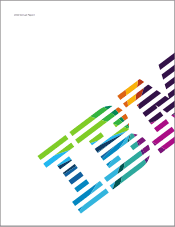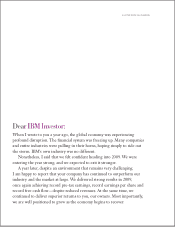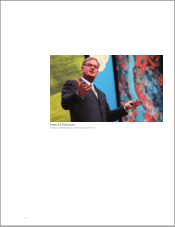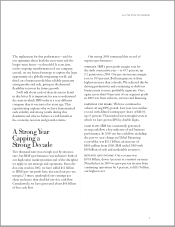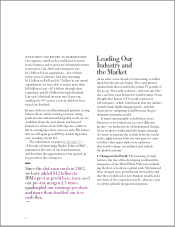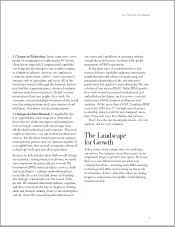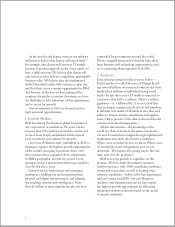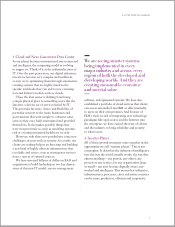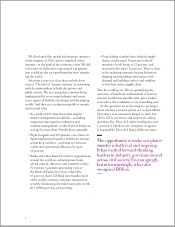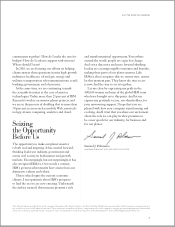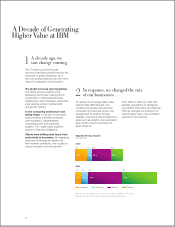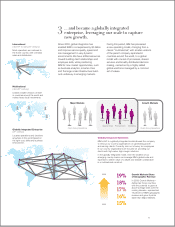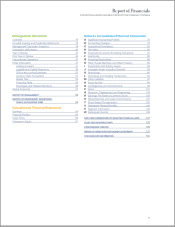IBM 2009 Annual Report Download - page 10
Download and view the complete annual report
Please find page 10 of the 2009 IBM annual report below. You can navigate through the pages in the report by either clicking on the pages listed below, or by using the keyword search tool below to find specific information within the annual report.
• Four leading retailers have reduced supply
chain costs by up to 30 percent, reduced
inventory levels by up to 25 percent, and
increased sales up to 10 percent. They’ve done
so by analyzing customer buying behaviors,
aligning merchandising assortments with
demand and building end-to-end visibility
across their entire supply chain.
This list could go on. We are quantifying the
outcomes of hundreds and hundreds of smarter
systems, and this measurable value gives leaders
everywhere the condence to try something new.
So the questions we are hearing are no longer
about whether a smarter planet is a real possibility.
Now, there is an enormous hunger to learn how.
CEOs, CIOs, governors and mayors are asking
questions like: How do I infuse intelligence into
a system for which no one enterprise or agency
is responsible? How do I bring all the necessary
We developed this agenda and strategic initiative
in the summer of 2008, and we launched it that
autumn
—
at the peak of the economic crisis. We did
so because we believed it represented a pragmatic
way to address the very problems that were transx-
ing the world.
After just a year, it is clear that our belief was
correct. The idea of “smarter systems” is resonating
with decision-makers in both the private and
public sectors. We are seeing these systems being
implemented in every major industry and across
every region of both the developed and developing
worlds. And they are creating measurable economic
and societal value.
• In a study of 439 cities, those that employ
smarter transportation solutions
—
including
ramp metering, signal coordination and
incident management
—
reduced travel delays on
average by more than 700,000 hours annually.
• Eight hospitals and 470 primary care clinics in
Spain implemented smarter healthcare systems
across their facilities
—
and improved clinical
results and operational efciency by up to
10 percent.
• Banks and other nancial services organizations
around the world are achieving new levels
of risk control, efciency and customer service.
For instance, payment processing costs at
the Bank of Russia have been reduced by
95 percent. And CLS Bank now handles most
of the world’s currency exchange transactions,
securely eliminating the risk from trades worth
$3.5 trillion per day, and growing.
The opportunity to make our planet
smarter is both real and inspiring .
It has excited forward -thinking
leaders in industry , government and
across civil society . Encouragingly ,
but not surprisingly , it has also
energized IBM ers .
8

